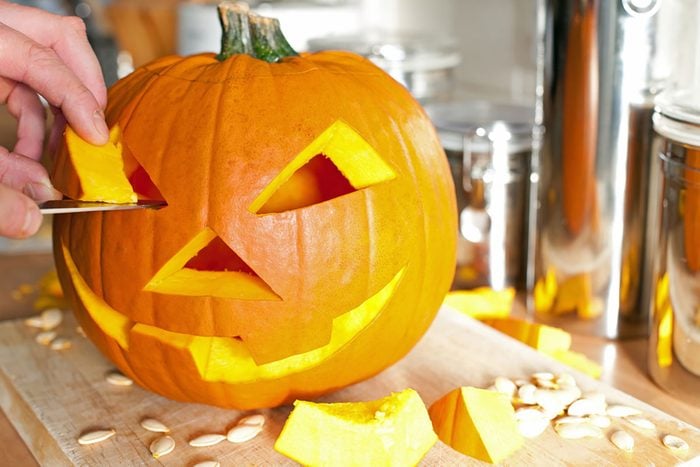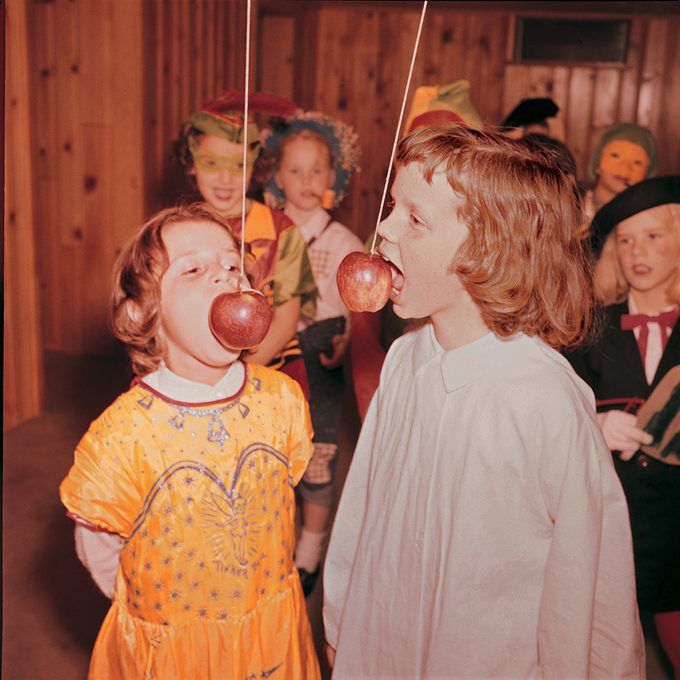 Michael Lacivita via ReminisceMichael Lacivita via Reminisce
Michael Lacivita via ReminisceMichael Lacivita via Reminisce
Halloween sure has changed since the days of apple bobbing and hand-stitched costumes. Let's take a trip down memory lane to see what this spooky holiday looked like the year you were born.
While you're at it, be sure to check out all of the
hauntingly good Halloween recipes we've collected over the years.
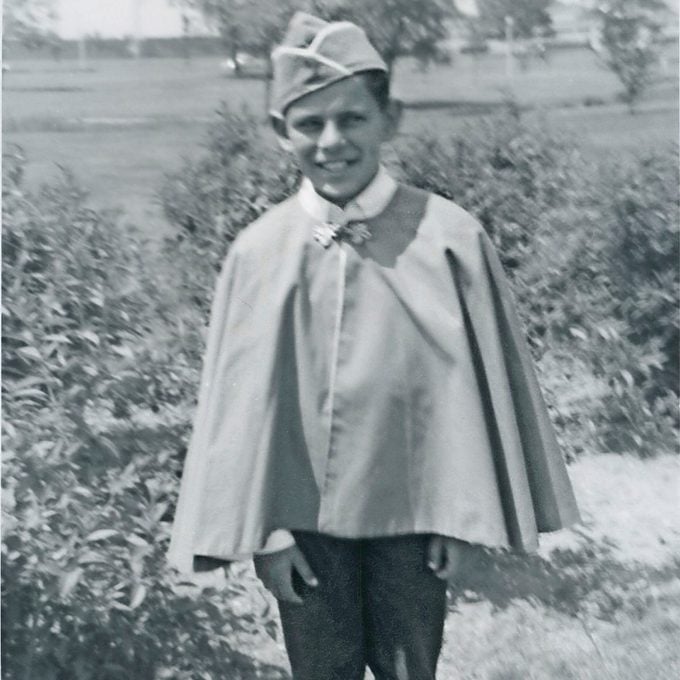 Joesephine Mele via Reminisce
Joesephine Mele via Reminisce1950
"After two years of staying home on Halloween because he was sick, all my little brother, Joey, wanted was to go trick-or-treating." —Joesephine Mele. Stay cozy with these
Halloween soup recipes.
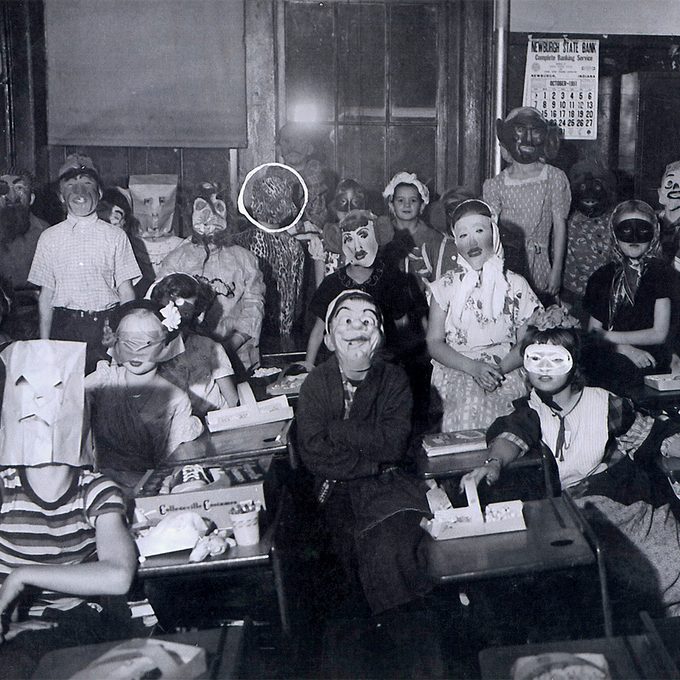 Jim Crawford via Reminisce
Jim Crawford via Reminisce1951
Fourth graders at Newburgh Elementary School rose to the occasion on Halloween when they competed with other classes for best costumes.
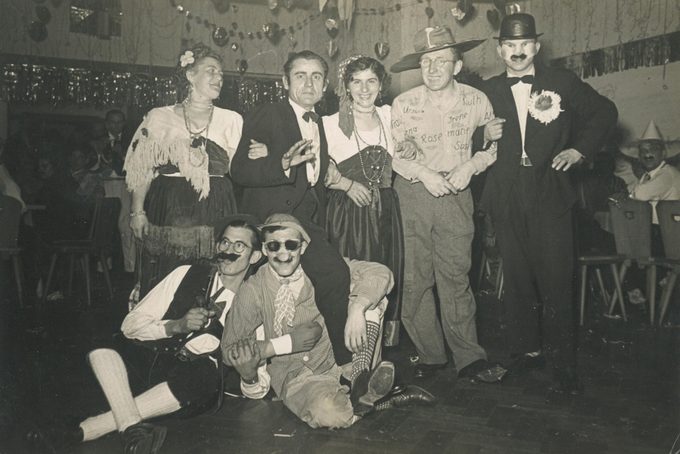 Hartnett Collection/PYMCA/REX/Shutterstock
Hartnett Collection/PYMCA/REX/Shutterstock1952
Who said grown-ups couldn't have a little Halloween fun? Though the party may have only been a few hours, we're sure that these memories have lasted a lifetime!
Travel back in time with these 55 recipes from the '50s.
 Reminisce
Reminisce1953
Late October in the '50s meant sometimes having to bundle up on Halloween night. This fur-lined costume was fit for a king!
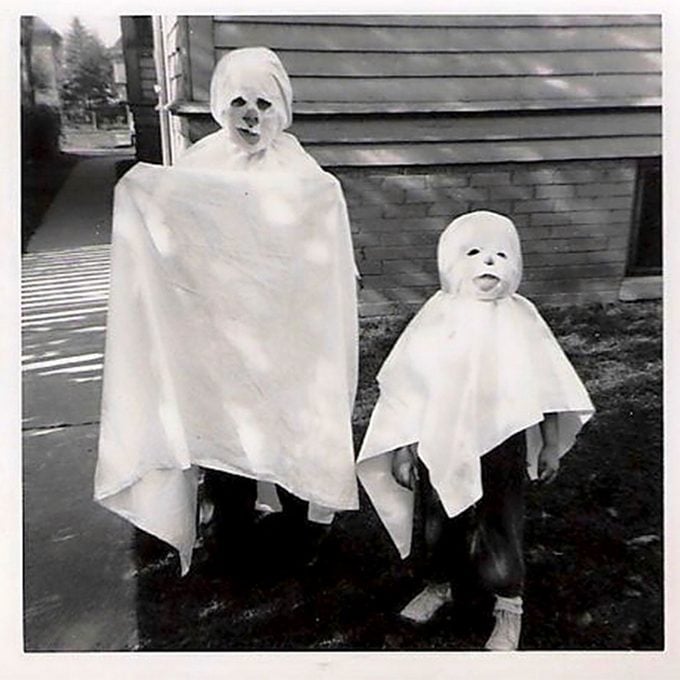 Patricia Kasbohm Schley via Reminisce
Patricia Kasbohm Schley via Reminisce1954
"We lived on 42nd street in Milwaukee. My mother must have had some old sheets to spare, as she made me and my older brother, Ken, ghost costumes for Halloween one year." —Patricia Kasbohm Schley
No one will say "boo" to our
Ghostly Custard recipe.
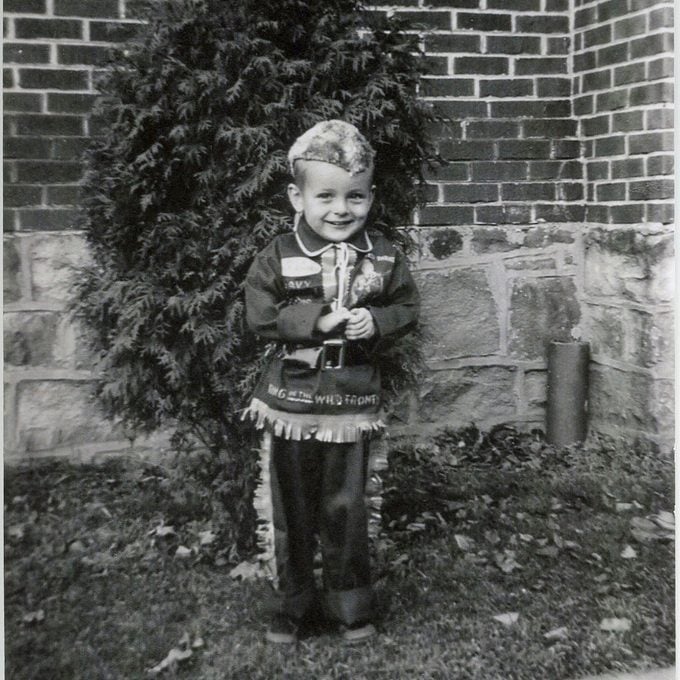 Genevieve Catina via Reminisce
Genevieve Catina via Reminisce1955
"My brother, Bob, sure was a cutie. This was in 1955 and
Davy Crockett, a five-part serial starring Fess Parker, was airing on ABC as a part of the Disneyland series." —Genevieve Catina
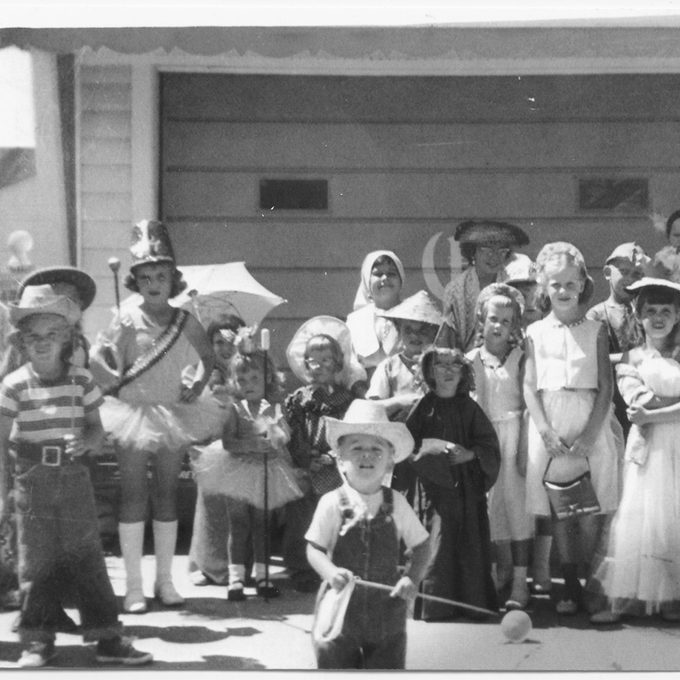 Arlene Cieglo-Beyma via Reminisce
Arlene Cieglo-Beyma via Reminisce1956
When it comes to Halloween costumes, finding one that is unique can be tough. This group of youngsters got creative by dressing up as baton twirlers, farmers, cowboys and more.
 Olga Wolfe via Reminisce
Olga Wolfe via Reminisce1957
Back in the '50s, many little buckaroos dreamed of being just like Roy Rogers, the "King of Cowboys."
Become a modern-day cowboy with these Wild West-inspired recipes.
 Bruce Bray via Reminisce
Bruce Bray via Reminisce1958
"This is a Halloween picture of Our Lady of Lourdes 8th grade all-boys class of 1958. I got my nerve up and asked the nun if I could have this picture." —Bruce Bray
 Debra Steilen via Reminisce
Debra Steilen via Reminisce1959
"Halloween proved to be a great time for my sister, Kathy, and me to jump on the cowboy chuck wagon. Raised on an electronic diet of TV Westerns (thanks to 2 older brothers) we happily wore cowgirl costumes." —Debra Steilen
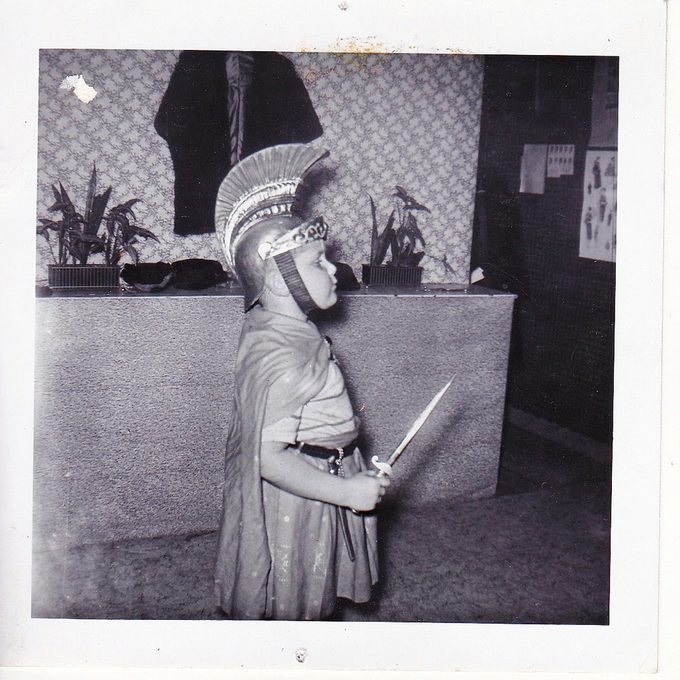 Heather Anderson via Reminisce
Heather Anderson via Reminisce1960
"In 1960, at age 8, my brother was a Roman centurion. We made the kilt and cape from an old red tablecloth and the helmet from gold-pained papier-mache. The dagger was real, but my father would let him hold it only while we took the photos" —Heather Anderson
 Michael Lacivita via ReminisceMichael Lacivita via Reminisce
Michael Lacivita via ReminisceMichael Lacivita via Reminisce1961
"While kids form a line, my daughter and her grade school classmate take a bite at apples swinging from the ceiling at a Halloween party in our rec room." —Michael Lacivita
Plain apples not your thing?
Take it up a notch by making these gourmet caramel apples.
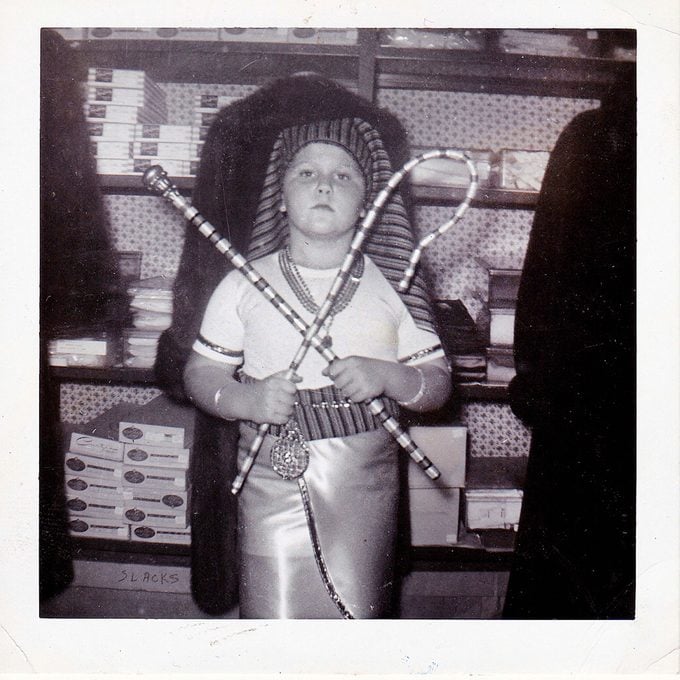 Heather Anderson via Reminisce
Heather Anderson via Reminisce1962
"A t-shirt, a couple of dish towels, miscellaneous bits of jewelry, and some creative bending of metal rods created this look." —Heather Anderson
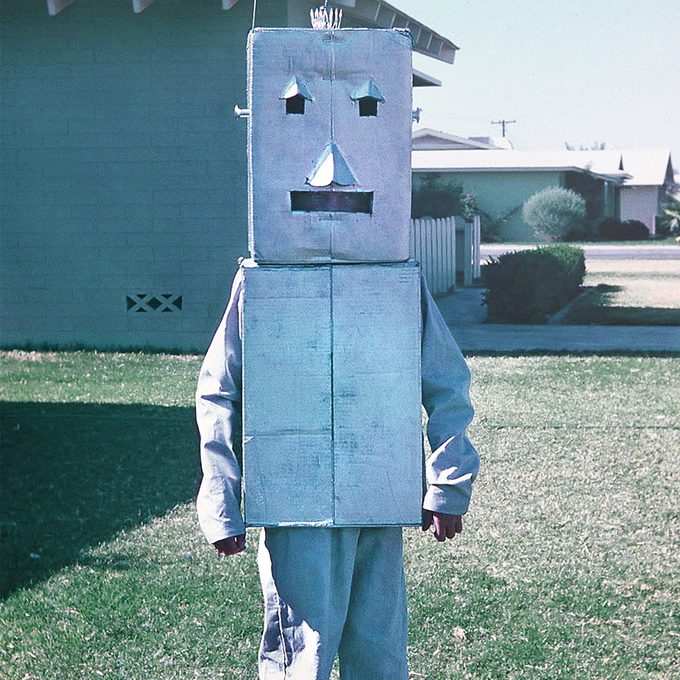 Peggy Oels via Reminisce
Peggy Oels via Reminisce1963
"When your dad is a service technician for IBM, it stands to reason that all those electronics could be used to make a blinking costume for Halloween." —Peggy Oels
Give your holiday beverage a scientific spin by serving up
this Mad Scientist Punch recipe.
 Sally Olson via Reminisce
Sally Olson via Reminisce1964
"Here's a photo of my younger siblings Peter and Laura tugging at Laura's yarn braids." —Sally Olson
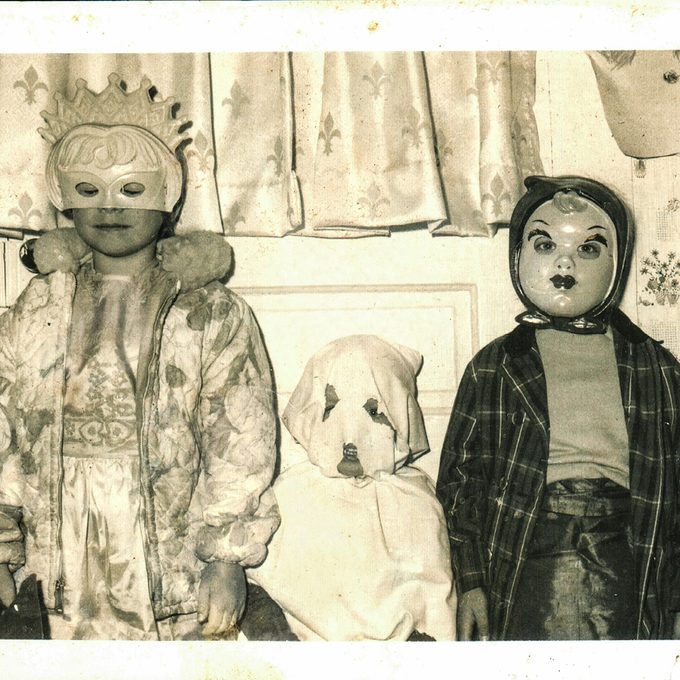 Karen Withers via Reminisce
Karen Withers via Reminisce1965
"It was so cold and rainy the Halloween of 1965 that we had to wear coats." —Karen Withers
Keep your trick-or-treaters warm by packing a Thermos of our
stovetop hot chocolate recipe.
 Reminisce
Reminisce1966
Premiering in the summer of 1966, ABC-TV's
Dark Shadows served up a daily dose of vampire drama. It was part soap opera, part horror and altogether freaky,
These vampire-themed cookies would fit right in.
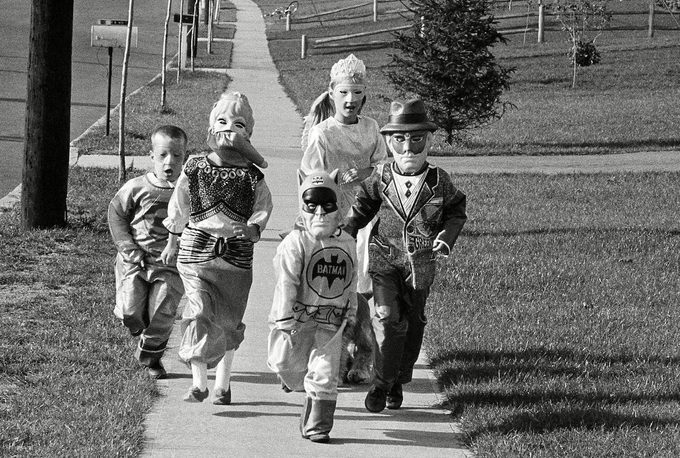 Eddie Adams/AP/REX/Shutterstock
Eddie Adams/AP/REX/Shutterstock1967
Though Spandex-clad Bruce Wayne had only made his TV appearance as Batman the year before, his superhero Halloween costume became one of the best-sellers in 19767—along with other popular comic book heroes like Superman and the Green Lantern.
 Sarah Mason via Reminisce
Sarah Mason via Reminisce1968
"My little brother and sister, Robbie and Aimee, dressed as Batman and a nurse for Halloween." —Sarah Mason
 Reminisce
Reminisce1969
"Here's a picture of my Gran trying the family's clown hat under her great-granddaughter Kristine's chin." —Jim Mattison
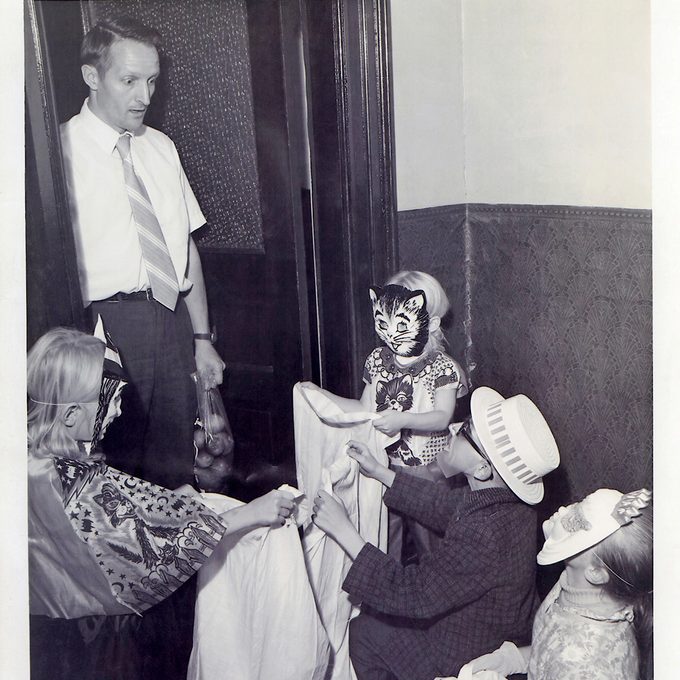 Nina McLean via Reminisce
Nina McLean via Reminisce1970
"This is a photo of my siblings and I surprising our dad by trick-or-treating at our own home. He treated his four little monsters to fresh apples on Halloween."—Nina McLean
Find out the fascinating history behind trick-or-treating.
 Lisa O'Brien/Reminisce
Lisa O'Brien/Reminisce1971
"Being a single mom and raising my daughter, Erin, on a very tight budget, I needed to be creative with her Halloween costumes. Our town had a children's Halloween party, and almost every year, Erin would win the prize for the most original costume." —Lisa O'Brien. Prepare these
Halloween cookies for your party.
 Sue Jernigan via Reminisce
Sue Jernigan via Reminisce1972
"My brothers Garth, Glenn and Jerry Jr. dressed for Halloween" —Sue Jernigan
Treat your ghosts to something extra-sweet this year with some of these Halloween cookie recipes.
1973
The '70s were all about flower power, just like this adorable homemade costume.
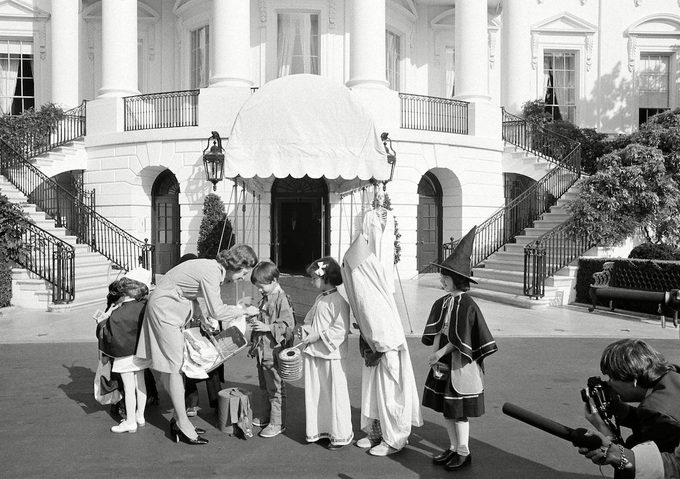 HENRY GRIFFIN/AP/REX/Shutterstock
HENRY GRIFFIN/AP/REX/Shutterstock1974
After giving out apples and bags of candy, First Lady Betty Ford placed a quarter into each child's UNICEF collection box on the White House lawn.
See the most-famous FLOTUS's favorite foods.
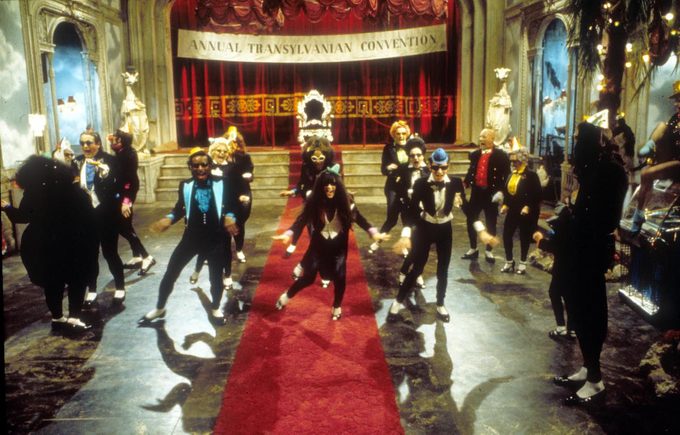 Moviestore/REX/Shutterstock
Moviestore/REX/Shutterstock1975
Let's do the Time Warp!
The Rocky Horror Picture Show, starring Tim Curry, Susan Sarandon and Barry Bostwick, was released in 1975.
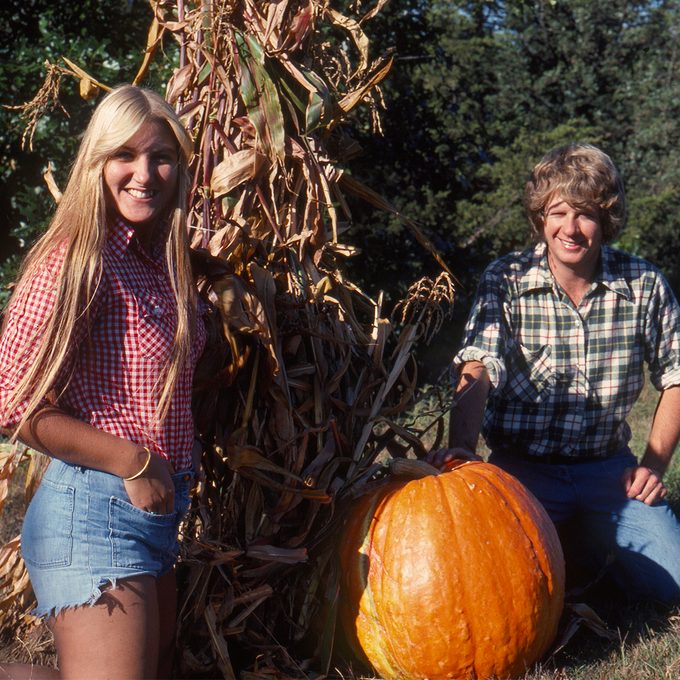 J. Birdney, M.D. via Reminisce
J. Birdney, M.D. via Reminisce1976
Few things go together as well as pumpkins and Halloween. Don't believe us?
Just check out these pumpkin recipes that are perfect for Halloween night.
 Lucasfilmn/Fox/Kobal via Shutterstock
Lucasfilmn/Fox/Kobal via Shutterstock 1977
In 1977, the world was introduced to Luke, Leia, Han and the rest of the galactic universe with the premiere of
Star Wars: Episode IV—A New Hope.
Don't want to limit your
Star Wars love to just Halloween?
You can fill your kitchen with these Star Wars-inspired gadgets that are sure to awaken the (cooking) Force in you.
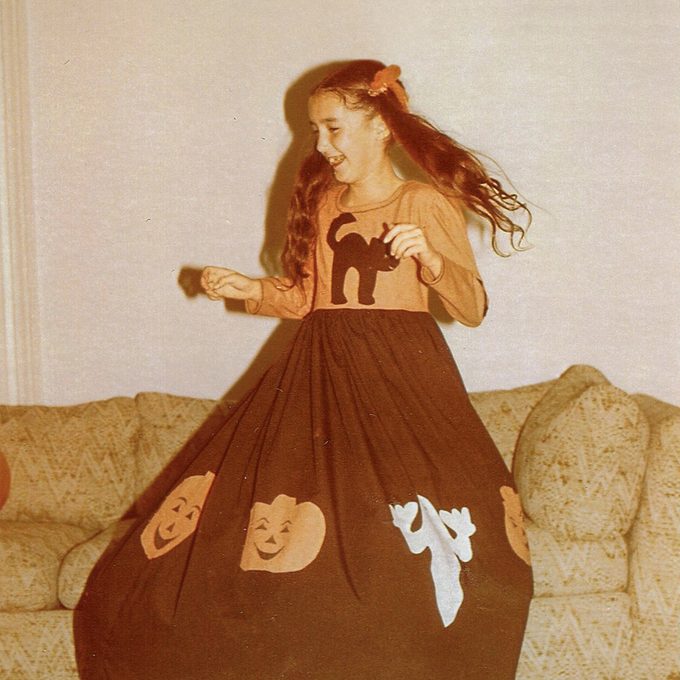 Carolyn Heep via Reminisce
Carolyn Heep via Reminisce1978
"My mom was a talented seamstress who sewed all the clothes for me, my sisters and her granddaughters. In 1978 she made Halloween this cute costume for my sister Debbie." —Carolyn Heep
 ITV/REX/Shutterstock
ITV/REX/Shutterstock1979
A year after
Halloween first premiered, the mask of its infamous villain, Michael Myers, was a go-to costume choice.
If spending a cozy night in watching scary movies is your favorite way to spend Halloween,
check out these recipes that are inspired by spooky films like Misery, The Ring, Children of the Corn and more.
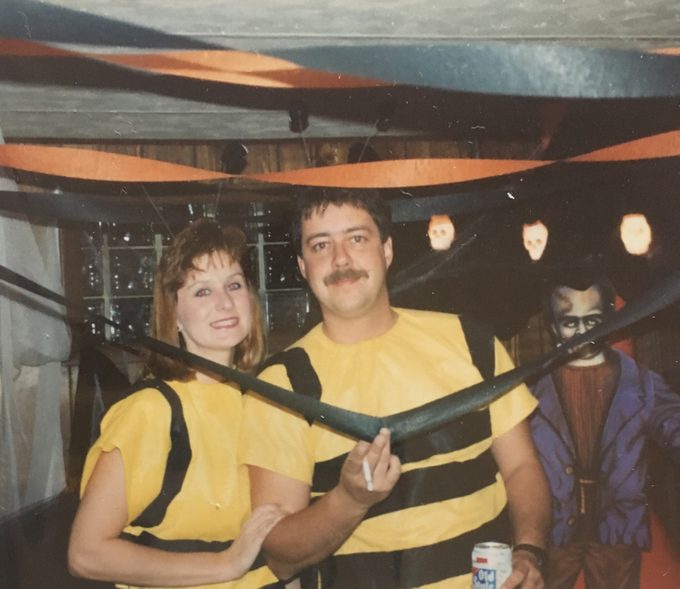 Maureen Stanko
Maureen Stanko1980
Not all Halloween costumes have to be scary! Dress as a busy bee, friendly ghost or a back cat for a costume that's more sweet than spooky.
 Darlene Brenden
Darlene Brenden1981
"This is my daughter, Kimberly, as a clown; and my daughter, Kristina, as a witch, in 1981." —Darlene Brenden
Have something spooky to snack on while trick-or-treating this year by making one of these haunted recipes.
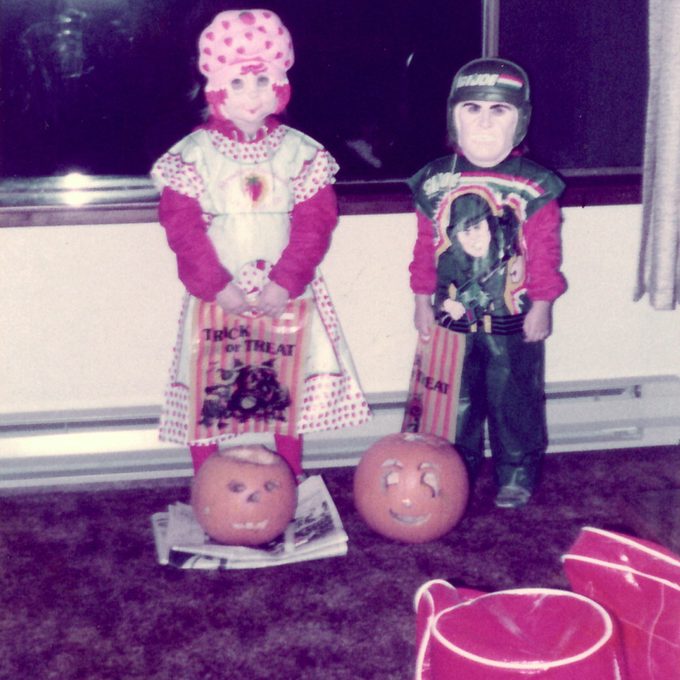 Elizabeth Bramkamp
Elizabeth Bramkamp1982
Be as proud of your Jack-O-Lantern this year as these kiddos were
with some expert tips for carving the best pumpkin ever.
 Elizabeth Bramkamp
Elizabeth Bramkamp1983
Sometimes, it's just easier for mom to dress the kids up in the same Halloween costume. Since mom always knows best,
here are some comfort food recipes just like she used to make.
 Columbia/Kobal via Shutterstock
Columbia/Kobal via Shutterstock1984
Are you afraid of ghosts? The supernatural comedy starring Sigourney Weaver, Dan Aykroyd, Rick Moranis, Bill Murray and Harold Ramis premiered in the summer of '84.
Throw your very own haunted bash with help from these ghost-themed recipes.
 Globe Photos Inc/REX/Shutterstock
Globe Photos Inc/REX/Shutterstock1985
Stick together for safety, kids! These adorable "dolls" held hands and posed for a picture before continuing on their mission for Halloween candy.
Try these Halloween candy recipes at home.
 Joan Hallford
Joan Hallford1986
Look out, here comes Spiderman! Creepy crawlers, like spiders, are a staple of Halloween lore.
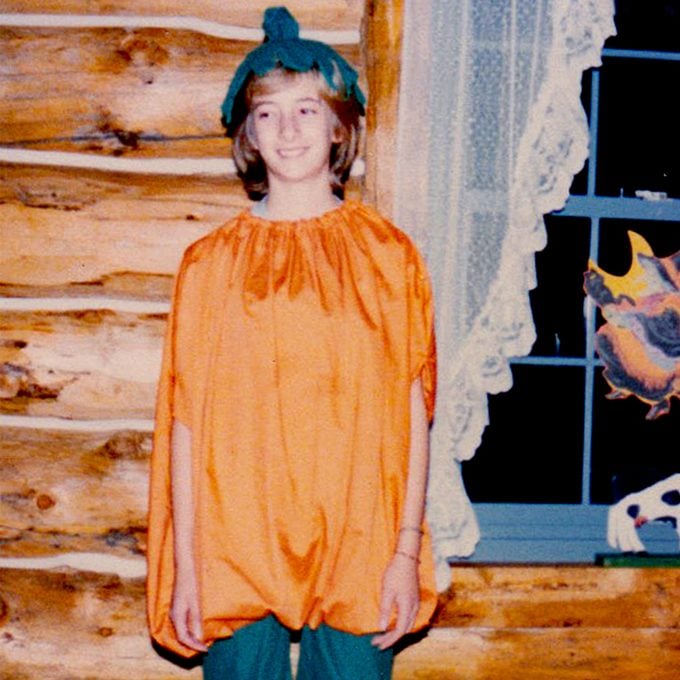 Darlene Brenden
Darlene Brenden1987
"I made this pumpkin costume for my daughter. Looking back, I should have stuffed it up a bit to fill her out, but she still looked great." —Darlene Brenden
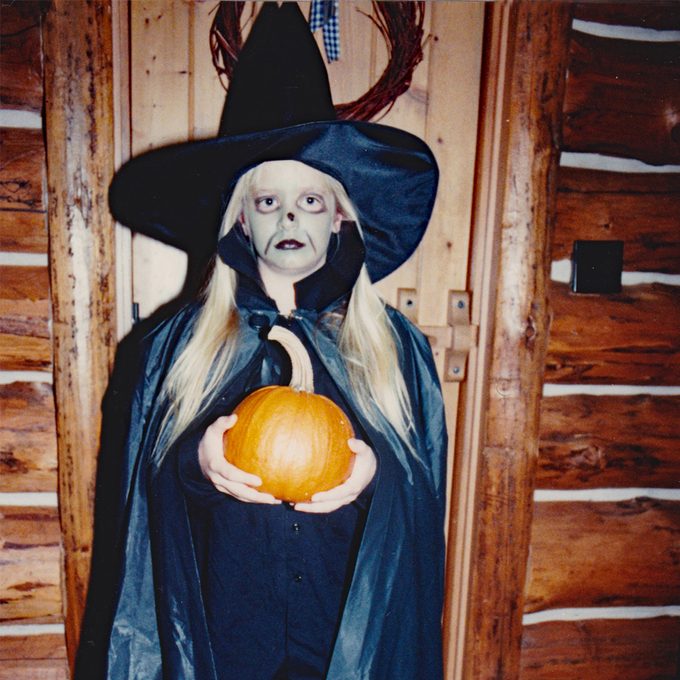 Darlene Brenden
Darlene Brenden1988
Double, double toil and trouble with your best pals this Halloween by throwing a 'Besties and Broomsticks' party.
Check out how the party comes together, here.
 Darlene Brenden
Darlene Brenden1991
"This is my daughter, Kristina, in 1991. The grade school she attended was called Deer Creek, so I decorated her sash with 'Miss Deer Creek'." —Darlene Brenden
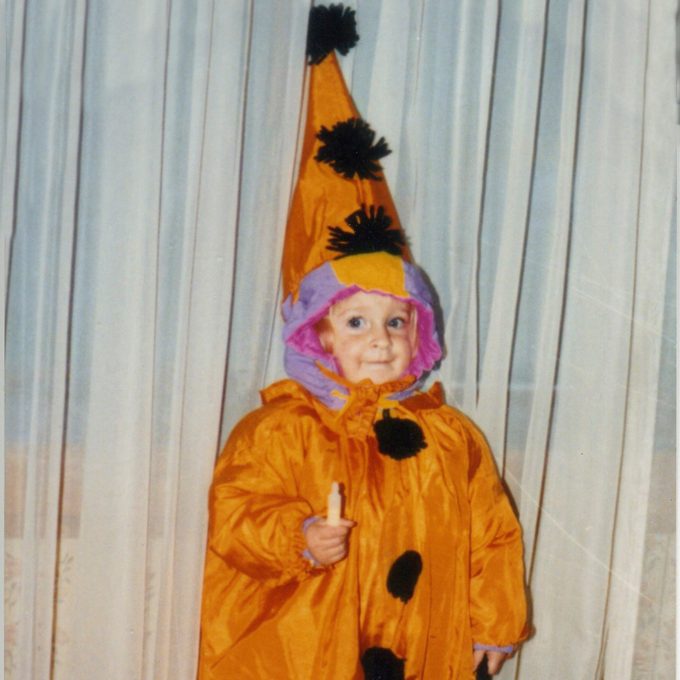 Reminisce
Reminisce1993
Some Halloween costumes, like this one from the Mattison family, are passed down through the generations.
For more family classics, check out these heirloom recipes.
 Country
Country1994
Don't get grumpy while carving your Jack-O-Lantern this year!
Here are some awesome, no-carve pumpkin ideas that come together in a snap.
 Maureen Stanko
Maureen Stanko1995
"This is my sister, Christina, with all of the nieces and nephews in the mid-'90s." —Maureen Stanko
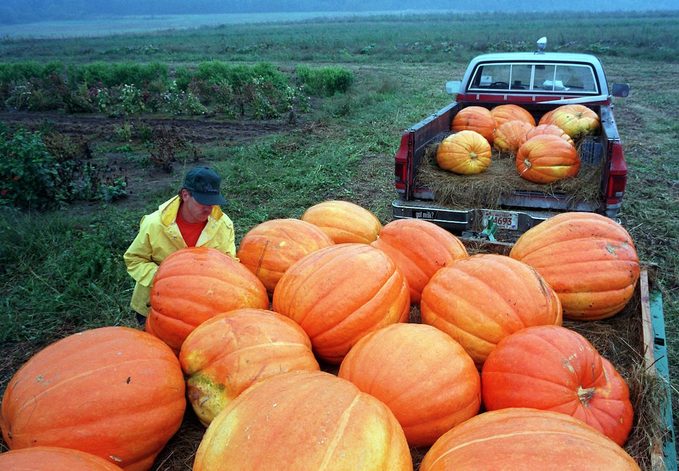 MARK LENNIHAN/AP/REX/Shutterstock
MARK LENNIHAN/AP/REX/Shutterstock1996
Farmer Wayne Woodard rallies up 100-pound pumpkins to sell at a roadside stand in New Milford, Connecticut.
These 66 pumpkin recipes are BIG on taste and perfect for Halloween.
 REX/Shutterstock
REX/Shutterstock1997
Nowadays, it's hard to imagine a Halloween without a dozen Harry Potters or Hermione Grangers running around the neighborhood. But in 1997, J.K. Rowling's popular children's series had just entered the scene—and sure enough, the three-headed dog costumes were soon to follow.
Get Harry Potter-inspired recipes.
 Country
Country1998
Apples to apples, Halloween is the spookiest season of the year! If you're looking for something to do with your apple haul,
take a look at our favorite fall apple recipes.
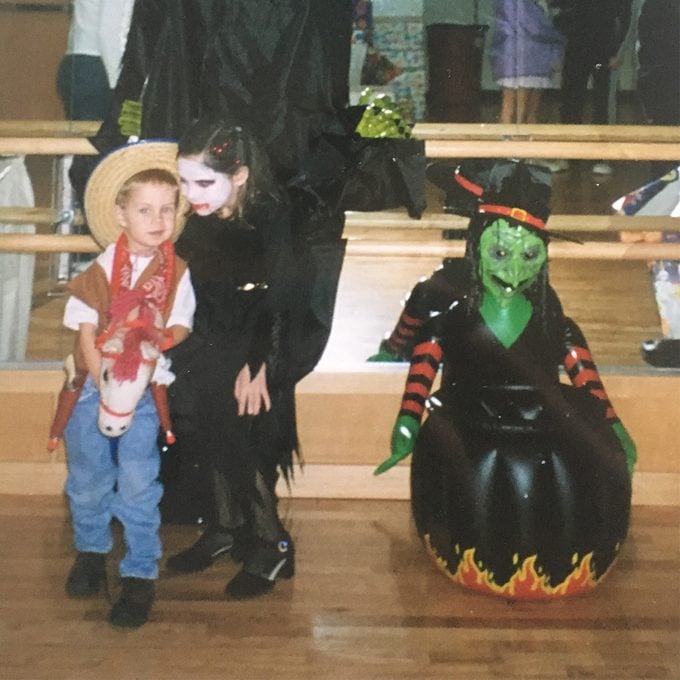 Maureen Stanko
Maureen Stanko1999
Other than Halloween, when can you see witches hanging out with cowboys? Turn your kitchen into a bona fide homestead with
this cowboy cookie recipe.
 Country
Country2000
It's tractor time! Get inspiration from the world around you, like this boy's homemade costume in 2000.
